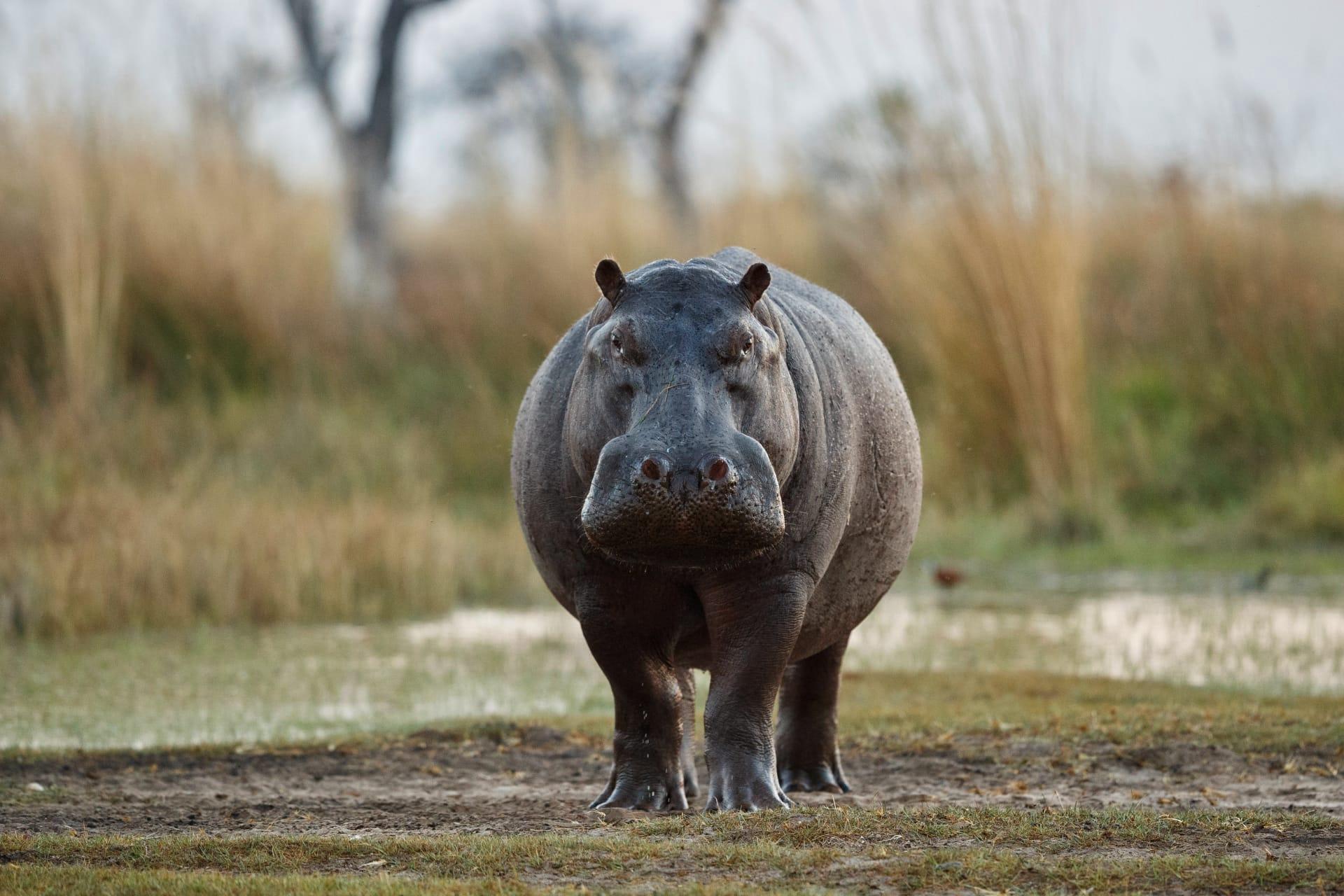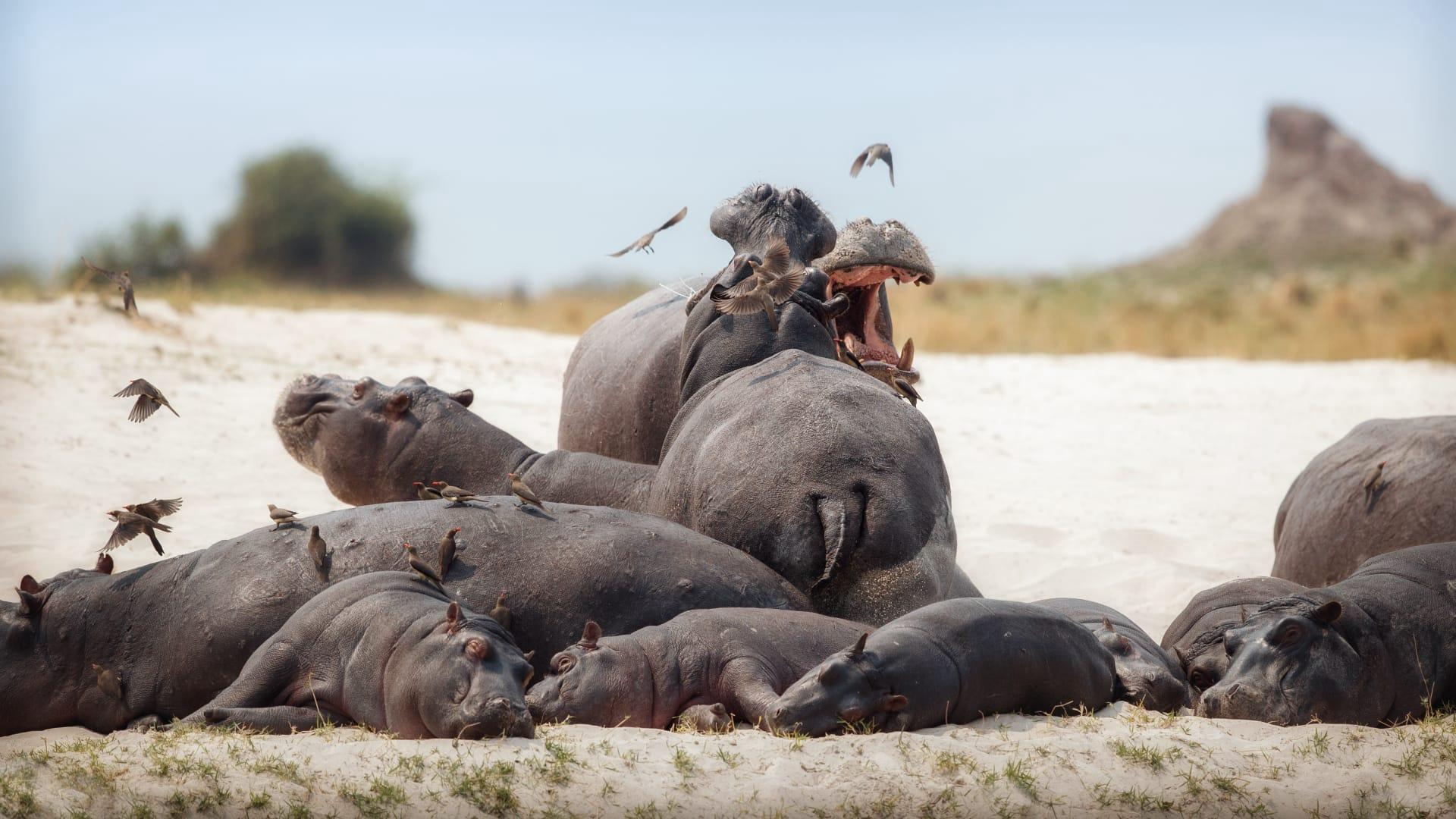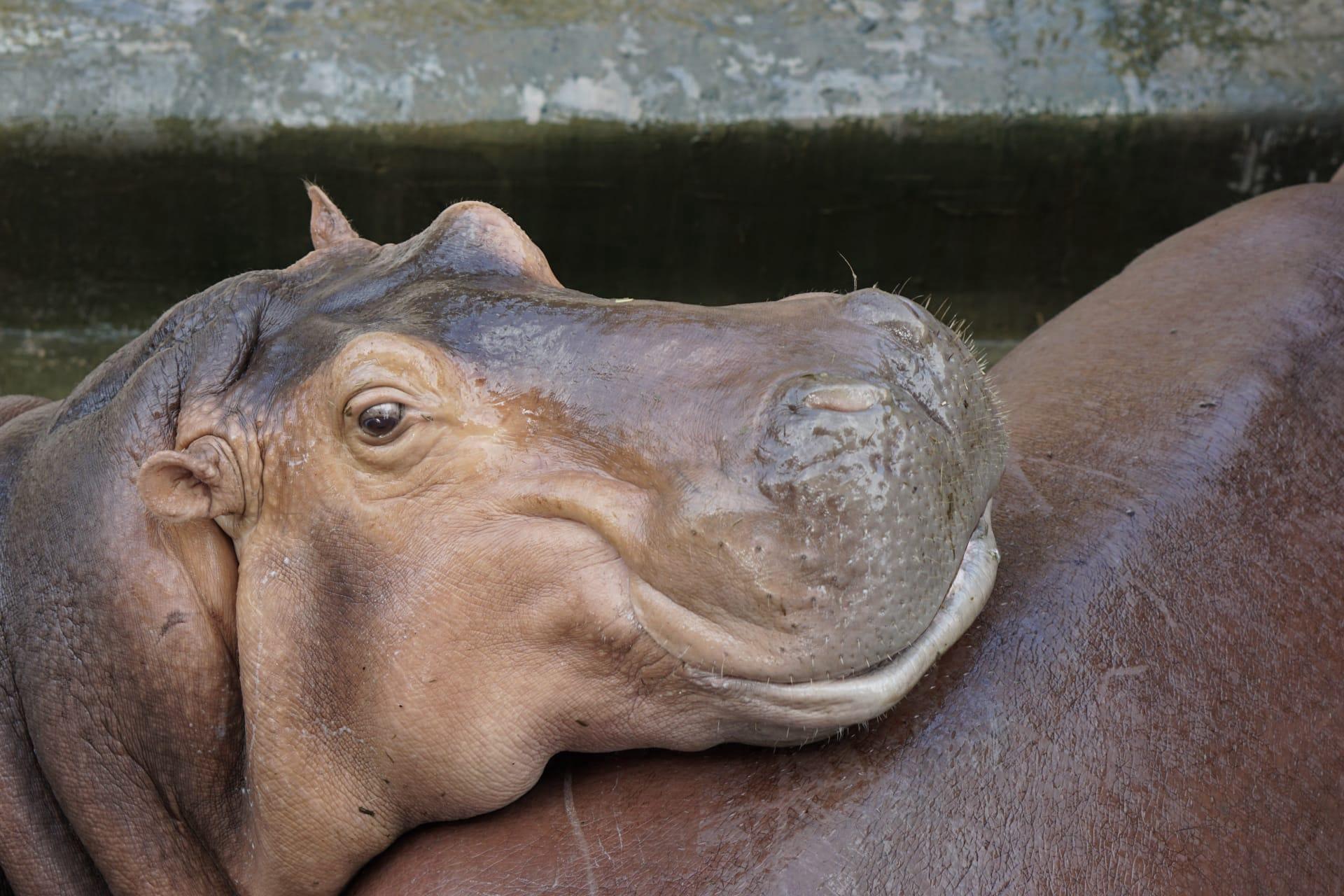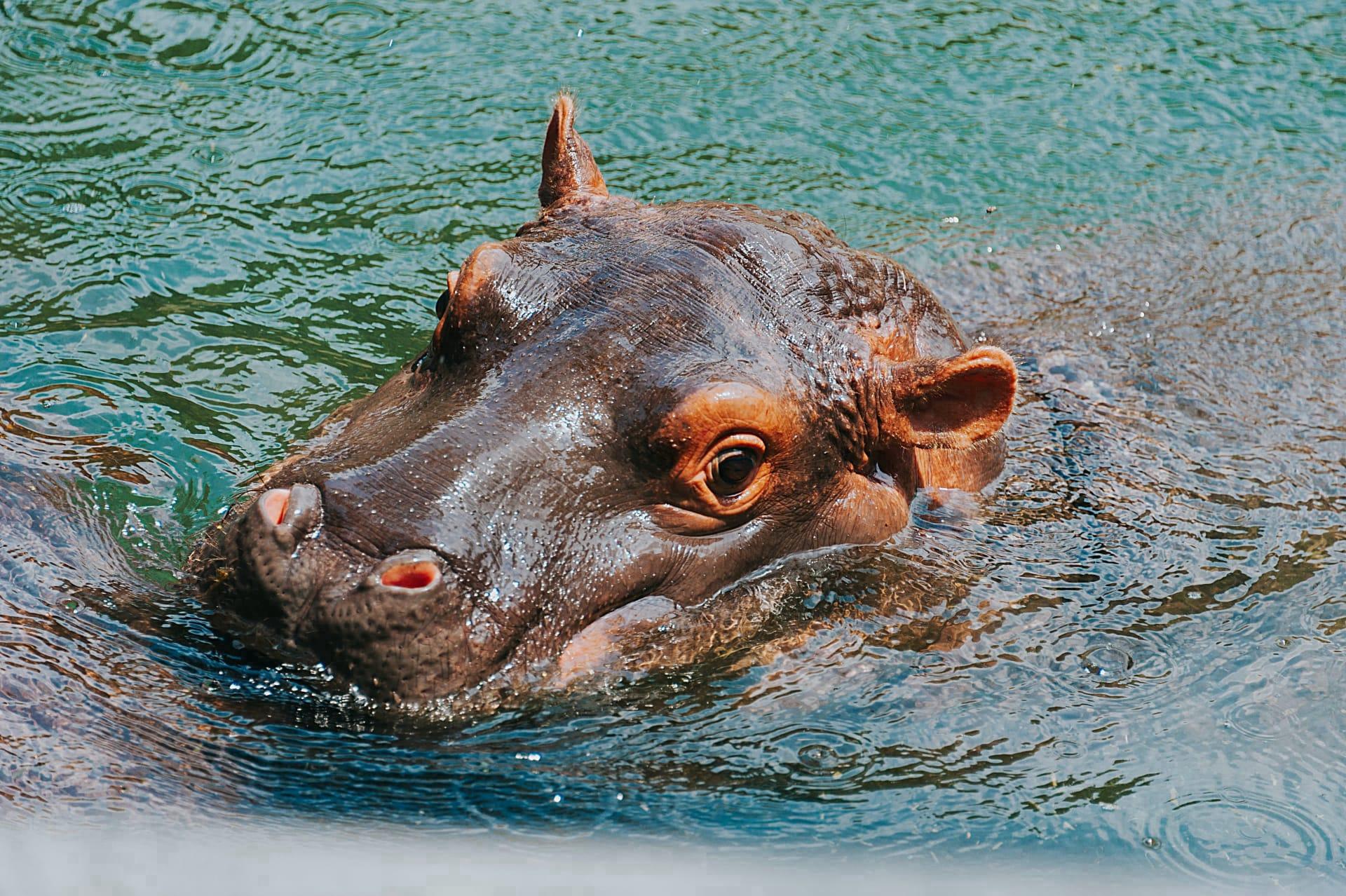Hippopotamus
- Home /
- Mini Encyclopedia /
- Animal /
- Hippopotamus
1
The Hippopotamus, often shortened to 'hippo', belongs to the family Hippopotamidae, under the order Artiodactyla, which encompasses even-toed ungulates. This massive creature is divided into two species: the common hippopotamus (Hippopotamus amphibius) and the smaller, less-known Pygmy hippopotamus (Choeropsis liberiensis). The common hippo is the third-largest land mammal by weight, following the elephant and the rhinoceros.
Hippos are primarily found in sub-Saharan Africa, dwelling in rivers, lakes, and mangrove swamps. They are most populous in areas with abundant water sources and sufficient grasslands nearby. Countries with significant hippo populations include Zambia, Tanzania, and Uganda. Their habitat is limited to regions where they can submerge themselves during the day to keep their massive bodies cool and hydrated, which is vital for their survival in the hot African climate.

2
Question: Is it true that hippos sweat blood?
Answer: No, hippos do not sweat blood. The myth likely arises from the reddish fluid they secrete, often mistaken for blood. This secretion is actually a natural sunscreen, known scientifically as 'blood sweat', but it contains neither blood nor sweat. This unique fluid, rich in highly pigmented red and orange compounds, helps protect the hippo's sensitive skin from sunburn and infections. It's a critical adaptation for an animal spending hours in the African sun.

3
Hippos have developed fascinating survival strategies. They are semi-aquatic mammals, spending up to 16 hours a day submerged in water to keep their massive bodies cool under the hot African sun. This behavior also helps prevent dehydration and sunburn. At night, hippos venture onto land to graze, consuming up to 35 kilograms of grass. Despite their bulk, they are surprisingly agile and can run up to 30 kilometers per hour on short distances.
Their social structure is another key survival element. Hippos live in groups, called pods, comprising anywhere from 10 to 30 individuals, sometimes even more. These groups are usually dominated by a single male, with the rest being females and their young. Living in groups provides protection against predators and aids in caring for the young. Their large size and formidable jaws with large teeth also serve as deterrents against most predators, making adult hippos relatively safe in their natural habitat.

4
In their natural habitats, hippos play a crucial role in maintaining the balance of the ecosystems. They act as 'ecosystem engineers', shaping the environment around them. Their large bodies create paths through thick vegetation, which other animals use as corridors to move through the jungle or savannah. Their dung enriches aquatic ecosystems, providing essential nutrients that fuel the food web, supporting a variety of aquatic life.
Additionally, hippos help control the growth of aquatic plants, maintaining open channels in rivers and lakes. This activity is vital for various fish species and other aquatic organisms. However, their role as ecosystem engineers is a double-edged sword; in areas with high hippo populations, their excessive defecation can lead to oxygen depletion in water bodies, causing fish kills. This highlights the complex interdependence between hippos and their environment.

5
Film: "Africa's River Giants" is a notable documentary focusing on hippos. Produced by the United Kingdom and released in 2019, it's part of PBS's 'Nature' series. The film delves into the life of the African hippo, showcasing their social behavior, survival strategies, and the challenges they face in the wild.
Book: "The Secret Life of Hippos" by Karen Paolillo, published in the United States in 2009. This book offers an intimate look into the world of hippos, based on the author's experiences in Zimbabwe. It focuses on hippo conservation, their behavior, and the threats they face in the wild.
Book: Another significant work is "Hippos: Giants Who Love the Water" by Ann O. Squire, released in the United States in 2015. This book, aimed at a younger audience, provides an engaging overview of hippo biology, habitat, and their role in the ecosystem. It's an excellent introduction for those curious about these fascinating creatures.